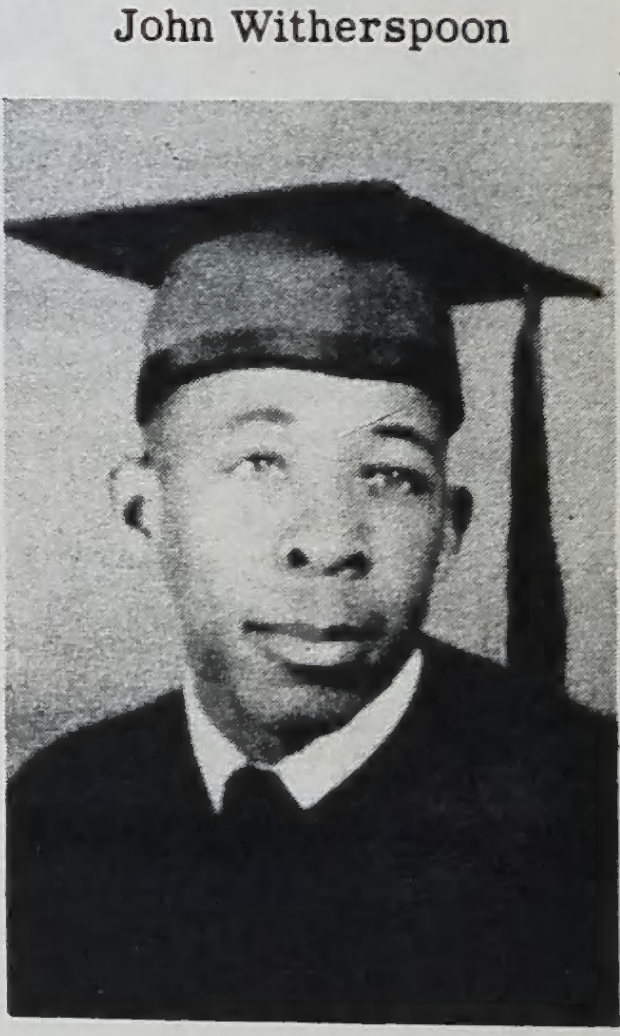 It is said that valor is common, but great souls are rare—John Gordon Witherspoon was among the rarest of souls.
It is said that valor is common, but great souls are rare—John Gordon Witherspoon was among the rarest of souls.
Born Aug. 26, 1939, in the North Carolina foothills of the Blue Ridge Mountains, John Witherspoon was the fourth of 11 children born to Jesse and Augusta Witherspoon. Raised in a working-class family, in Lenoir, N.C., Witherspoon began showing leadership potential early on as he helped to raise his siblings. “John was always in teaching mode,” said one of his siblings. “He was the one you went to for advice, and he always encouraged us to think and to look forward to the future.”
Growing up in America’s pre-civil rights segregated South, Witherspoon was always mindful of his role as a Black man in America. He taught his siblings that they had to fight like hell to get what they wanted in life. Witherspoon’s weapon of choice for the fight was personal excellence, and his mantra was “learn, think, then act.” When one of his younger sisters quit her job, Witherspoon sat her down to write about the consequences of her actions and what she hoped to gain by losing her job. She remembered that experience taught her a valuable lesson in problem solving and decision-making: “John made it crystal clear to each of us that we had to be a force for good and a platform for change.” Several of the Witherspoon siblings would grow up to become transformational community and corporate leaders.
Witherspoon was an outstanding student and a tremendous athlete, playing football, baseball, and basketball. In one championship basketball game, he took 11 shots and hi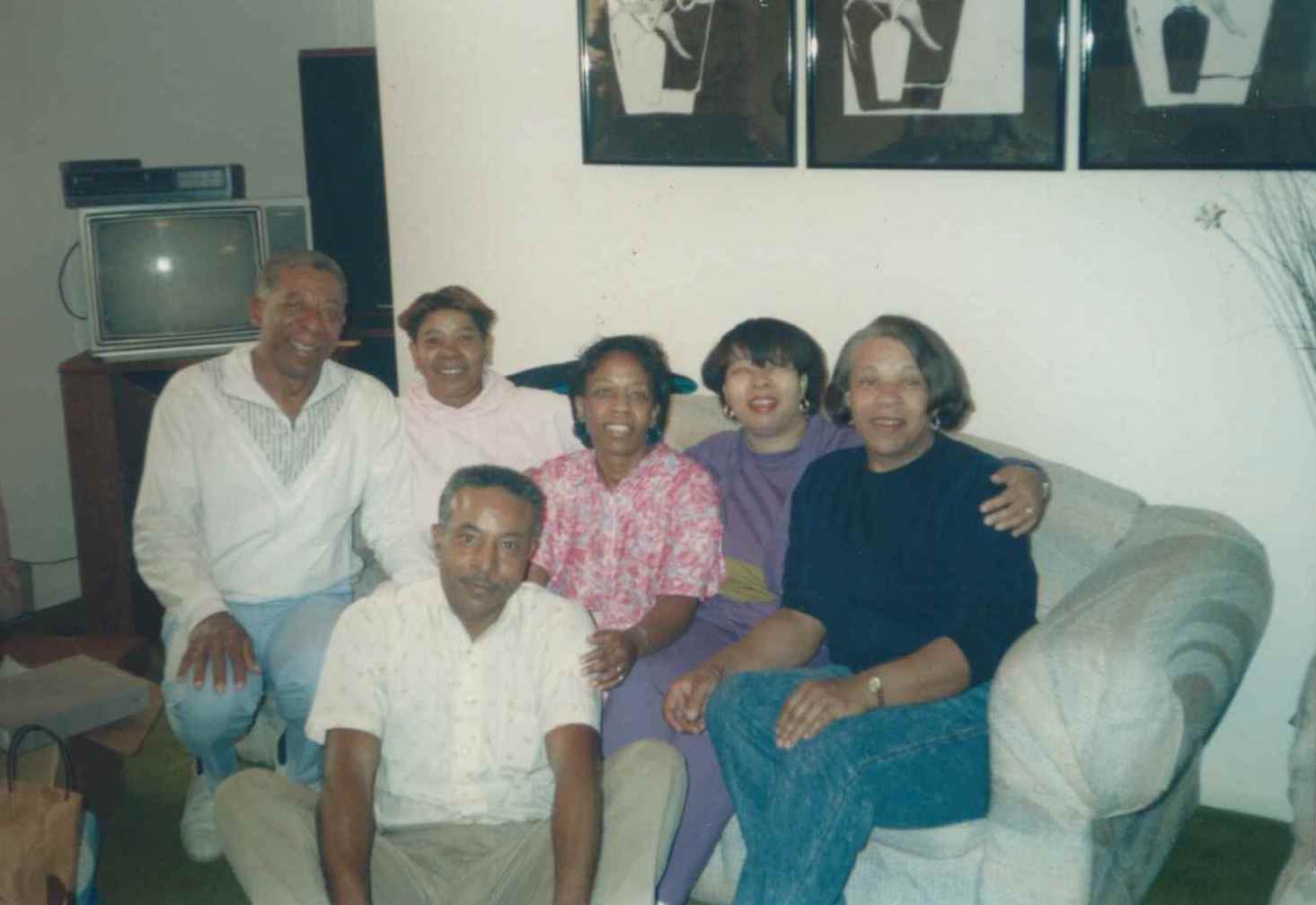 t all of them. When the paper came out the next day, the sports reporter dubbed him “Mr. Perfect,” a nickname that followed him throughout high school.
t all of them. When the paper came out the next day, the sports reporter dubbed him “Mr. Perfect,” a nickname that followed him throughout high school.
After high school, Witherspoon’s parents could not afford to send him to college. Witherspoon chose to enlist in the U.S. Army, even though Army deployments to the Vietnam War were increasing. After serving a three-year enlistment, he returned home to care for his aging parents.
In 1963, Witherspoon enlisted in the Coast Guard and, within eight years, he reached the rank of quartermaster first class. It was at that point he set a goal of becoming a commissioned officer. He had an exemplary enlisted record, a sterling reputation, and he was confident that he could meet the academic challenges of Officer Candidate School (OCS). However, there was one problem. Witherspoon could not meet the selection criteria, which required two years of college. That did not stop Witherspoon’s dogged determination to achieve his goal. He pursued a waiver, and with congressional support, was allowed to apply for OCS. He was ultimately selected and, 17 weeks later, graduated with academic honors.
Retired Chief Petty Officer Jimmi Wilson fondly remembered Witherspoon’s OCS journey: “He stopped by my office on his way to OCS. Four months later, in 1971, he came to my office for a brief visit as a Coast Guard ensign. I was very proud of him. I am glad to have had the pleasure of serving with him!”
Witherspoon’s officer assignments were diverse and demonstrated the pioneering role he played in Coast Guard history. He served as commanding officer of cutters Mallow, Valiant, and Dependable. When he assumed command of the Valiant, he became the first African-American officer to command a Coast Guard medium-endurance cutter. When Witherspoon assumed command of the Coast Guard’s Vessel Traffic Services-Houston/Galveston, the event marked the first time an African American officer had commanded both afloat and ashore units.
Reflecting on his memory of “Papa Spoon,” retired Vice Adm. Manson Brown recounted,
“There were less than 80 black officers in the Coast Guard when I was commissioned in 1978. Then Lt. John Witherspoon w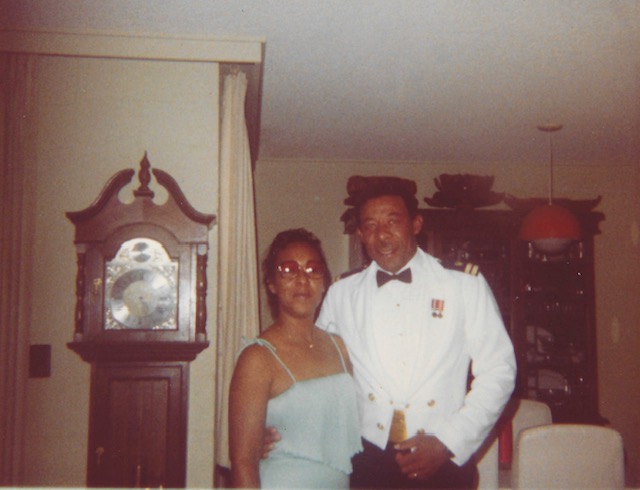 as one of them. Our paths didn’t cross until I interacted with him at National Naval Officers Association conferences beginning in the mid-1980s. Attendees embraced Papa Spoon as one of the few senior men of the black officer corps. He was an inspiring role model. He epitomized leadership by example. He exemplified poise and professionalism. And, he taught us that we could make a positive difference in the Coast Guard through commitment, hard work, and perseverance. His most powerful lesson to me was his exceptional ability to gracefully speak truth to power, which I observed him demonstrate on more than one occasion. I most recall Captain Witherspoon’s playful smile, which he often shared during casual moments. His legacy illuminates a path towards excellence for those who follow. While I received many humbling honors during my career, I treasure most being named in 1994 as the first recipient of the Coast Guard Captain John G. Witherspoon Award for Inspirational Leadership. It’s a testament to the influence that Papa Spoon had on me and countless others. His name is etched in my heart forever!"
as one of them. Our paths didn’t cross until I interacted with him at National Naval Officers Association conferences beginning in the mid-1980s. Attendees embraced Papa Spoon as one of the few senior men of the black officer corps. He was an inspiring role model. He epitomized leadership by example. He exemplified poise and professionalism. And, he taught us that we could make a positive difference in the Coast Guard through commitment, hard work, and perseverance. His most powerful lesson to me was his exceptional ability to gracefully speak truth to power, which I observed him demonstrate on more than one occasion. I most recall Captain Witherspoon’s playful smile, which he often shared during casual moments. His legacy illuminates a path towards excellence for those who follow. While I received many humbling honors during my career, I treasure most being named in 1994 as the first recipient of the Coast Guard Captain John G. Witherspoon Award for Inspirational Leadership. It’s a testament to the influence that Papa Spoon had on me and countless others. His name is etched in my heart forever!"
According to Coast Guard Captain Warren Judge:
“When I reported to the Coast Guard Cutter Valiant in 1990 as a radioman second class, my [commanding officer (CO)], Commander Witherspoon, was the first senior African American officer I had 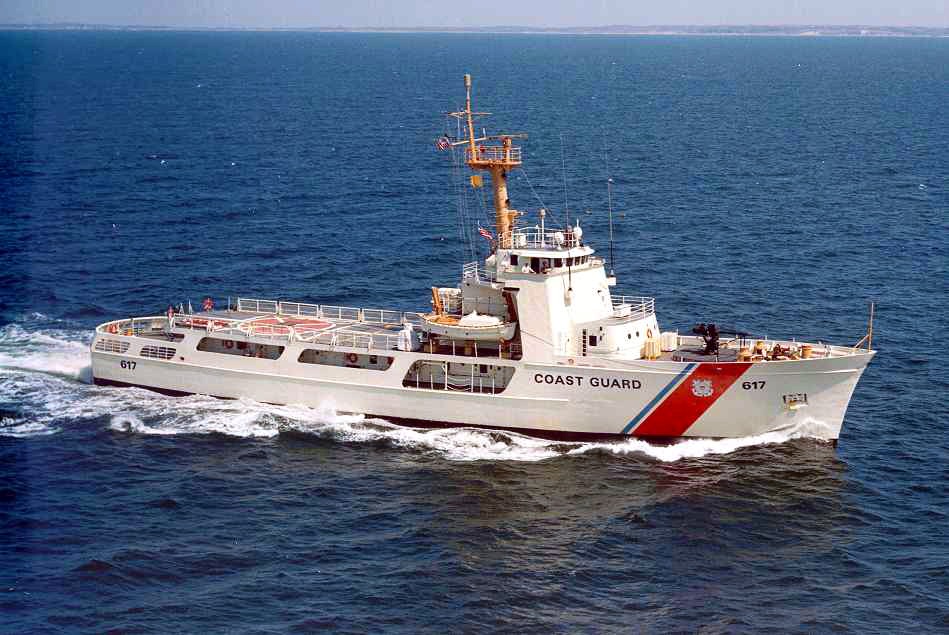 encountered in my career. I always thought about being an officer in the Coast Guard, but after serving under Commander Witherspoon’s tutelage for three years, my desire was heightened. Knowing my aspirations to be like our CO, a chief petty officer board started calling me “Teaspoon,” a name given to the Witherspoon followers. There are many stories I could share from my three years of working for and under Captain Witherspoon, one that resonates with me—we were on patrol, and our mid-patrol break was delayed by three days, at the three-day mark, we were extended again for another two days. At the end of those 48 hours, the CO received another call to discuss extending us again. After an ‘interesting’ radio conversation, the last words I heard were, ‘My crew has been working hard. We are pulling into port tomorrow morning for the mid-patrol break. OUT!’ Later, Papa Spoon called me to his quarters to provide me with leadership 101. He spoke about the importance of taking care of your crew at all costs because once you lose your crew’s respect, it is tough to regain it. When it wa
encountered in my career. I always thought about being an officer in the Coast Guard, but after serving under Commander Witherspoon’s tutelage for three years, my desire was heightened. Knowing my aspirations to be like our CO, a chief petty officer board started calling me “Teaspoon,” a name given to the Witherspoon followers. There are many stories I could share from my three years of working for and under Captain Witherspoon, one that resonates with me—we were on patrol, and our mid-patrol break was delayed by three days, at the three-day mark, we were extended again for another two days. At the end of those 48 hours, the CO received another call to discuss extending us again. After an ‘interesting’ radio conversation, the last words I heard were, ‘My crew has been working hard. We are pulling into port tomorrow morning for the mid-patrol break. OUT!’ Later, Papa Spoon called me to his quarters to provide me with leadership 101. He spoke about the importance of taking care of your crew at all costs because once you lose your crew’s respect, it is tough to regain it. When it wa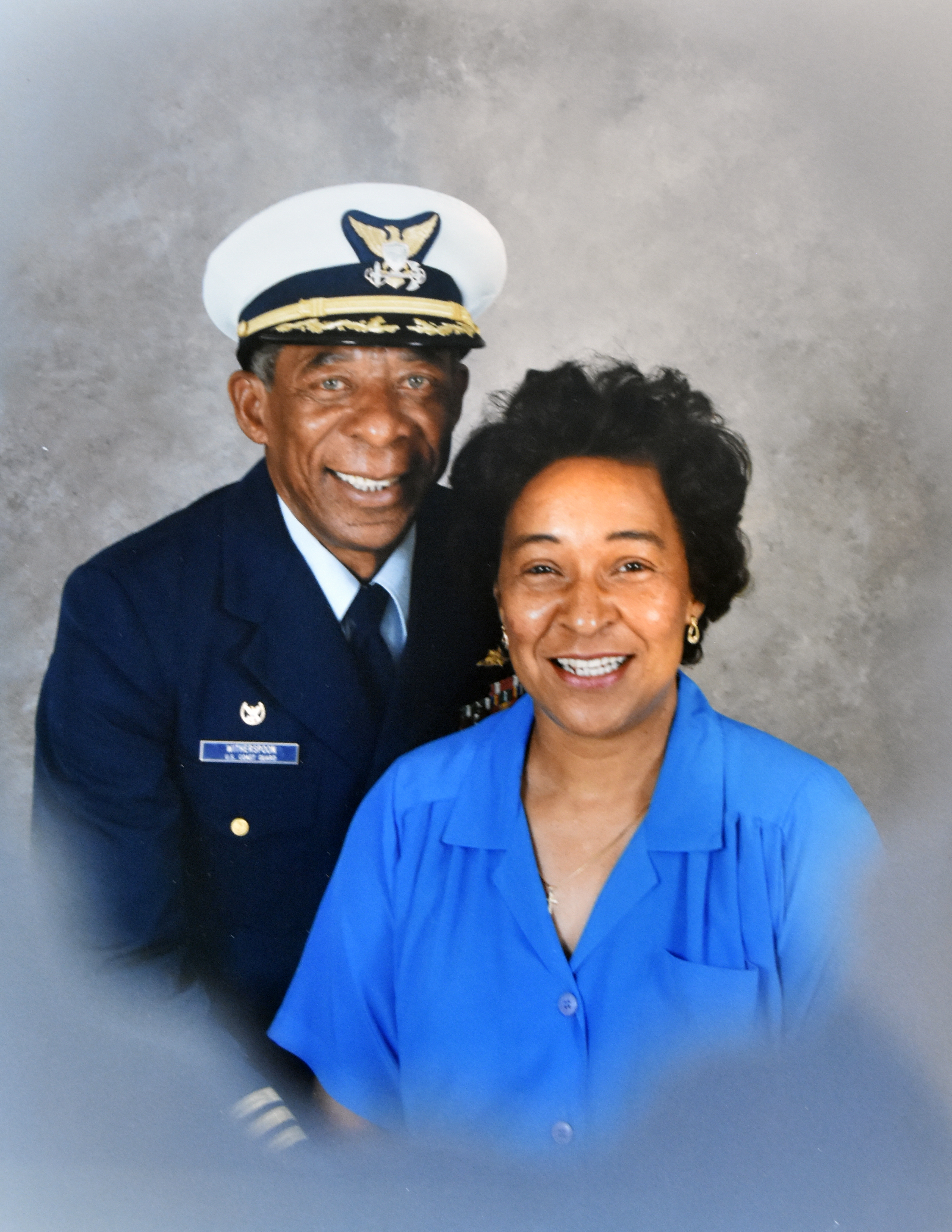 s time for me to transfer, Captain Witherspoon strongly suggested that I put Coast Guard Air Station Elizabeth City, North Carolina, on my dream sheet. I responded, ‘No sir, I have no idea where that unit is located.’ Captain Witherspoon said, ‘Yes.’ RM2 Judge said ‘No.’ While on patrol, Captain Witherspoon called the detailer and said, ‘RM2 Judge will take Coast Guard Air Station Elizabeth City, N.C., . . . the end!’ I did not know that Captain Witherspoon was from Lenoir, North Carolina, and he knew there was a Historic Black College and University (HBCU) near the air station. Listening to my mentor [smiling], I went to the air station and later graduated from Elizabeth City State University."
s time for me to transfer, Captain Witherspoon strongly suggested that I put Coast Guard Air Station Elizabeth City, North Carolina, on my dream sheet. I responded, ‘No sir, I have no idea where that unit is located.’ Captain Witherspoon said, ‘Yes.’ RM2 Judge said ‘No.’ While on patrol, Captain Witherspoon called the detailer and said, ‘RM2 Judge will take Coast Guard Air Station Elizabeth City, N.C., . . . the end!’ I did not know that Captain Witherspoon was from Lenoir, North Carolina, and he knew there was a Historic Black College and University (HBCU) near the air station. Listening to my mentor [smiling], I went to the air station and later graduated from Elizabeth City State University."
I do not recall when or where I first met John Witherspoon. However, I do remember that shortly after our first meeting, he began greeting me with the nickname “Namesake” because we shared the name John. He called me Namesake, but I always called him “Sir”! I quickly came to appreciate the qualities that so many valued in him—integrity, honesty, pragmatism, and a focus on problem solving.
During my years in the service, I never heard Papa Spoon complain. However, I do recall him speaking courageously about what he described as his most challenging assignment: enforcing a U.S. immigration policy in the Caribbean Sea that he believed discriminatory toward migrants of color. Haitian immigrants were summarily repatriated without a hearing, while Cubans were offered a safe haven as political asy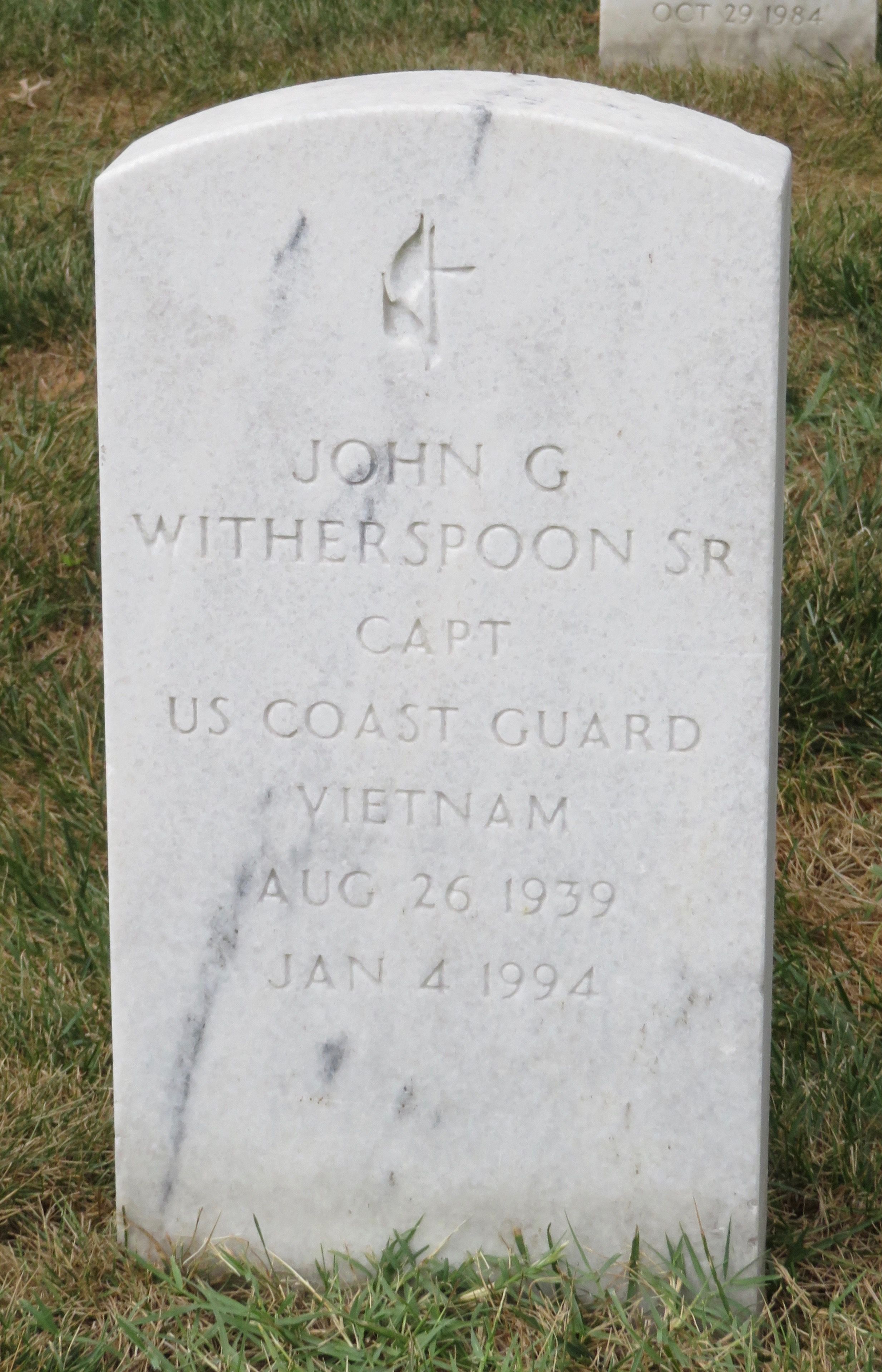 lum seekers. He also noted that the policy was incredibly insulting to African American crewmembers who were expected to carry out this perceived unjust practice.
lum seekers. He also noted that the policy was incredibly insulting to African American crewmembers who were expected to carry out this perceived unjust practice.
Witherspoon’s military and civilian awards and decorations included the Coast Guard Meritorious Service Medal, two Coast Guard Commendation Medals, and the National Association for the Advancement of Colored People (NAACP) Roy Wilkins Renown Service Award. After his death in 1994, the Coast Guard established the Captain John G. Witherspoon Inspirational Leadership Award, to be given to an officer who, like Captain Witherspoon, exemplified the Coast Guard’s core values of honor, respect and devotion to duty. In 1995, the National Naval Officers Association established the Captain John G. Witherspoon for Excellence in Leadership and Mentoring Award. In addition, in 2003, Captain Witherspoon was inducted into the Caldwell County (North Carolina) School’s Hall of Fame. A plaque with his picture and biography hangs in several schools in Caldwell County as an inspirational example for students. Soon, he will also be honored as namesake of a Coast Guard “Sentinel”-Class Fast Response Cutter.
Throughout his career, Witherspoon distinguished himself as a model professional. However, not just professional achievements cemented the legacy of Captain Witherspoon. Instead, Papa Spoon will be remembered most for his wise counsel, superb personal example, and compassionate mentoring of so many Coast Guard men and women pursuing the “right path.” Papa Spoon was the consummate conscientiousness of concern for others and, in years to come, his role model and mentorship will multiply through his army of “Teaspoons.”
If we need a lodestar to guide our life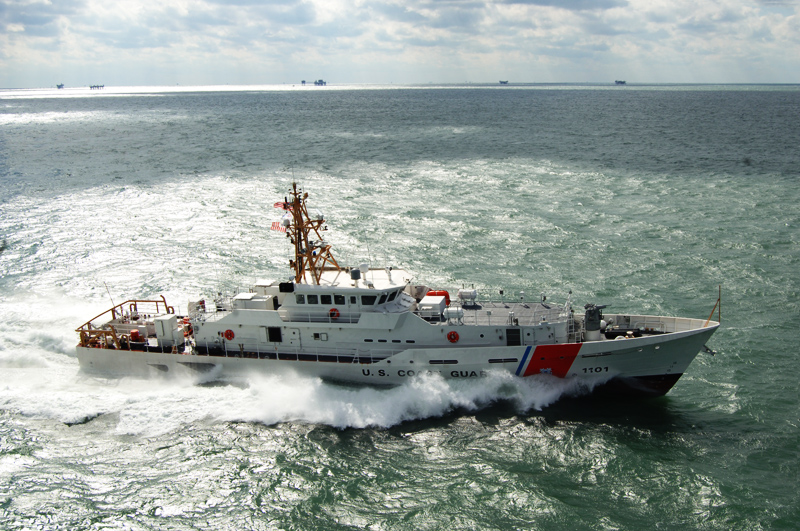 , work, and service to others, we could ask for no better example than Captain John Gordon Witherspoon. The professionalism and charisma Captain Witherspoon displayed at all times spoke volumes about who he was and how much his voice was respected not only among his peers but also in the Coast Guard. He was a trailblazer from the foothills of the Blue Ridge Mountains, who taught us to embrace our duty to each other as fellow human beings.
, work, and service to others, we could ask for no better example than Captain John Gordon Witherspoon. The professionalism and charisma Captain Witherspoon displayed at all times spoke volumes about who he was and how much his voice was respected not only among his peers but also in the Coast Guard. He was a trailblazer from the foothills of the Blue Ridge Mountains, who taught us to embrace our duty to each other as fellow human beings.
In January 1994, as I walked in the funeral procession of friends and family behind Captain John Gordon Witherspoon’s horse-drawn casket, I reflected on how much I benefitted from his wisdom, operational expertise, and the core values that guided his extraordinary life. As I walked, I seemed to hear a soft, quiet voice saying, “Now it’s your turn.” I looked at Papa Spoon’s flag-draped casket and smiled.
I am truly blessed and honored to have known Papa Spoon and to have been the recipient of his wisdom. I shall never forget his magnetic smile. I can only hope to leave a legacy half as remarkable as the one he left the Coast Guard and me.